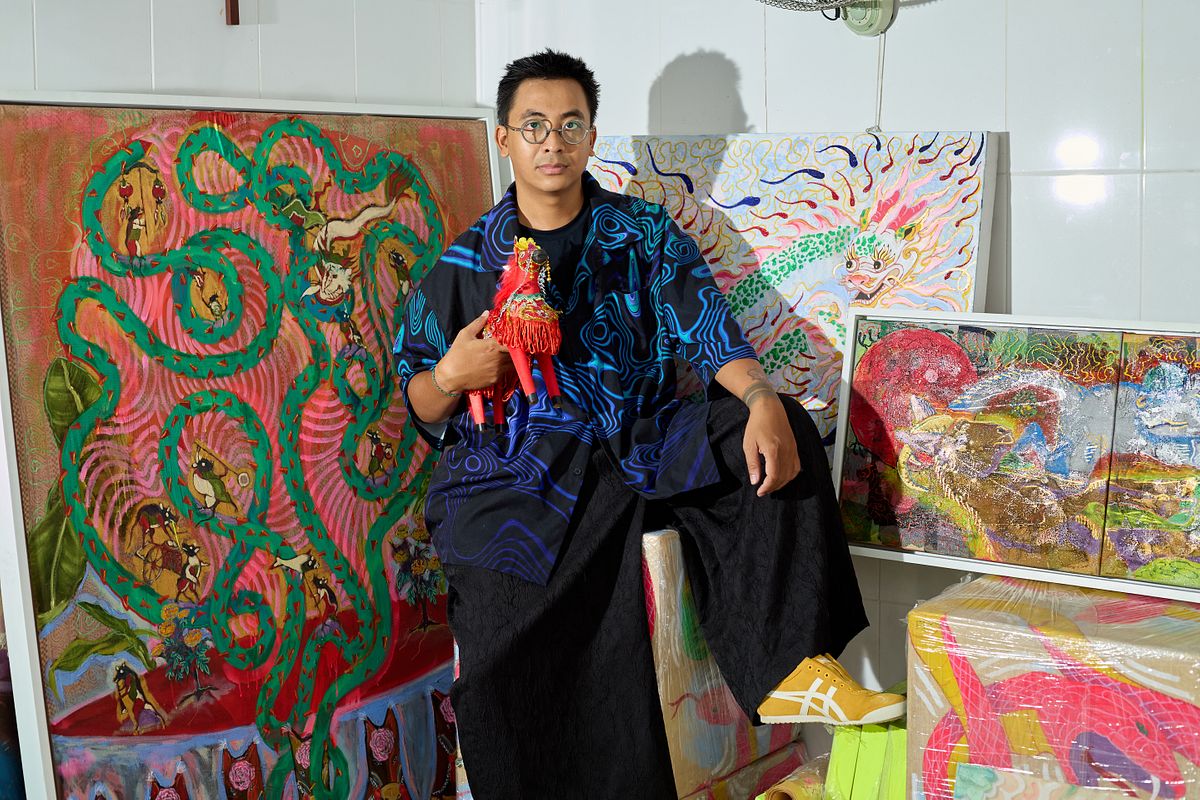Can a painting reflect who we are, even if we can’t see ourselves thoroughly? And how does faith guide us forward in life?
Based in Hồ Chí Minh City, Nguyễn Đức Tín is a multidisciplinary artist whose practice spans painting, mixed media, and conceptual installation. In recent years, he has become well-known for incorporating mosquito net (vải mùng) into his paintings, while his latest works also experiment with a wide range of materials, including canvas, dó paper, colored acrylic board, and stainless steel. His most recent solo exhibitions include “DUCTIN” at Lotus Gallery (2025) and “Under The Sun II: Mùng Trời Chiếu Đất” (2024) at Sun Life Flagship - De La Sól (2024). He also participated in group exhibitions such as “Thanh Kiều Art–Culture Exhibition” (2025) at Hải An Bookstore, Hanoi Grapevine Selection (2024), Ồ Ạt – Oh Art (2024–2025), 2T (2022), and international programs such as the India Art Camp (2023).
His recent works reveal not only technical experimentation with different choice of materials, but also how faith has been the main driving force throughout his artistic journey. His works uphold dialogues between faith and everyday life, which is inspired by his very own Catholic upbringing and his deep engagement with Vietnamese traditional culture.
After graduating from the HCMC University of Fine Arts, Nguyễn Đức Tín spent another few years expanding his cultural and spiritual studies in Australia and the Philippines. His work often draws from traditional Vietnamese aesthetics, theology, and social reflection, interweaving memory, myth, and modern life. When preparing for a new exhibition, he usually starts by establishing a central theme, then spends time researching and gathering materials.
For instance, in “Mùng Trời Chiếu Đất” (2024), he focused on the everyday objects that he grew up with, mainly mosquito net (mùng) and the mat (chiếu) and explored their connection to Vietnamese culture, such as children’s games and afternoon naps. For “DUCTIN” (2025), the inspiration came from a trip to Hanoi as he saw the collective housing blocks there as a miniature society, where people share common spaces but each has their own story: someone with authority — kings and officials in his paintings, the talkative person, the quiet introspective one, the inner demon within each individual, or the person who is punished among others.
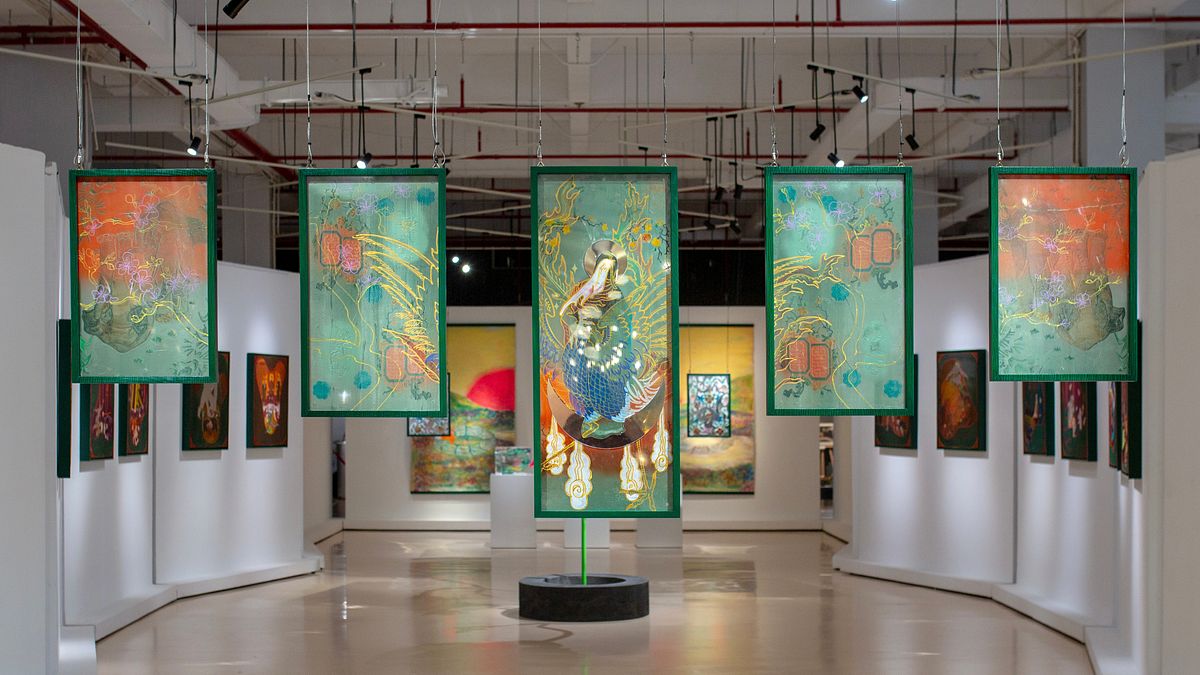
“The Lady of Faith” (back), 2025. 40 x 100, 40 x 70 cm, 40 x 60 cm (set of 5 panels). Plexiglass, fabric, glass paint and acrylic. Installation view at Lotus Gallery.
“The Lady of Faith” (Nữ Vương Đức Tin), created in 2025 and including a set of five two-sided panels that evoke both Catholic stained glass and the form of a hanging screen door, features Catholic figures such as Mother Mary intertwined with elements rooted in Vietnamese folk tales — characters, myths, and spiritual motifs, such as the phoenix and the parasol tree (cây ngô đồng). According to the artist, the rose symbolizes the joy and gentleness that Mother Mary brings to humanity, while the parasol tree, in Vietnamese culture, represents a virtuous and kind person ready to welcome holy figures. It also reflects Mary’s gentle and humble character, as she receives God with the words “xin vâng.”
The integration between his Catholic faith and Vietnamese traditional culture emerged naturally in Tín’s works. During his time in monastic life, he studied a lot of philosophy and theology, while Vietnamese culture was something he explored personally. When working with theological materials, mainly Catholic, that knowledge sank deeply into his subconscious. Prior to “Mùng Trời Chiếu Đất” (2024), he had not painted much about Vietnamese culture, and it was during this project that the fusion began to emerge. By reading the Bible and other Catholic texts alongside a rediscovery of tradition, he gradually found a connection between the two.
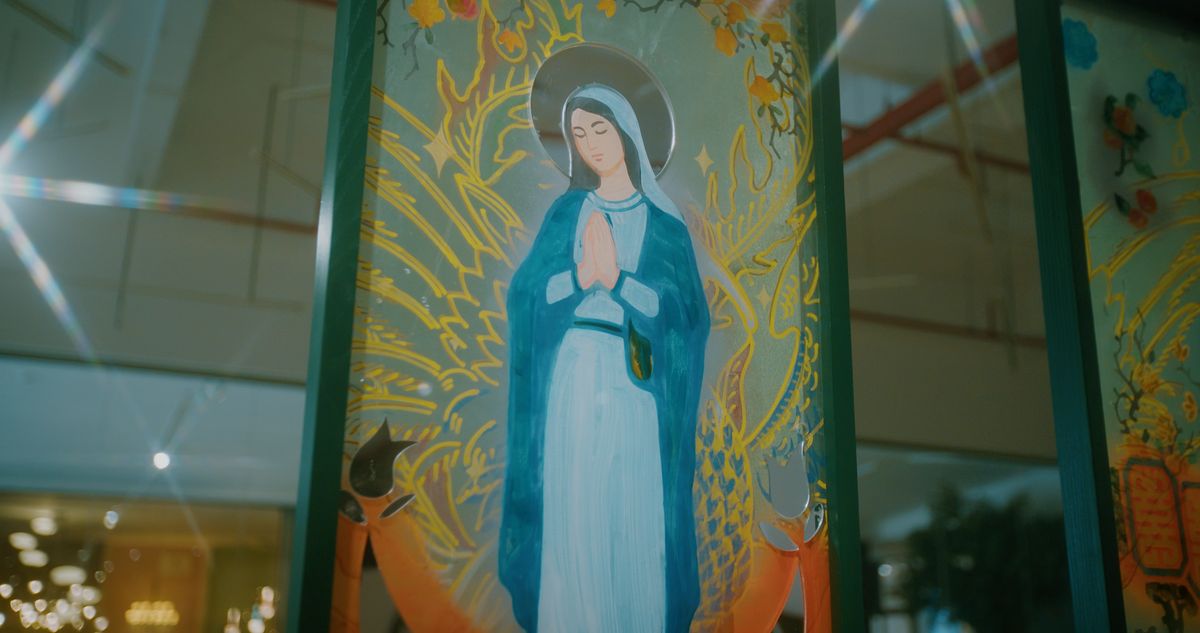
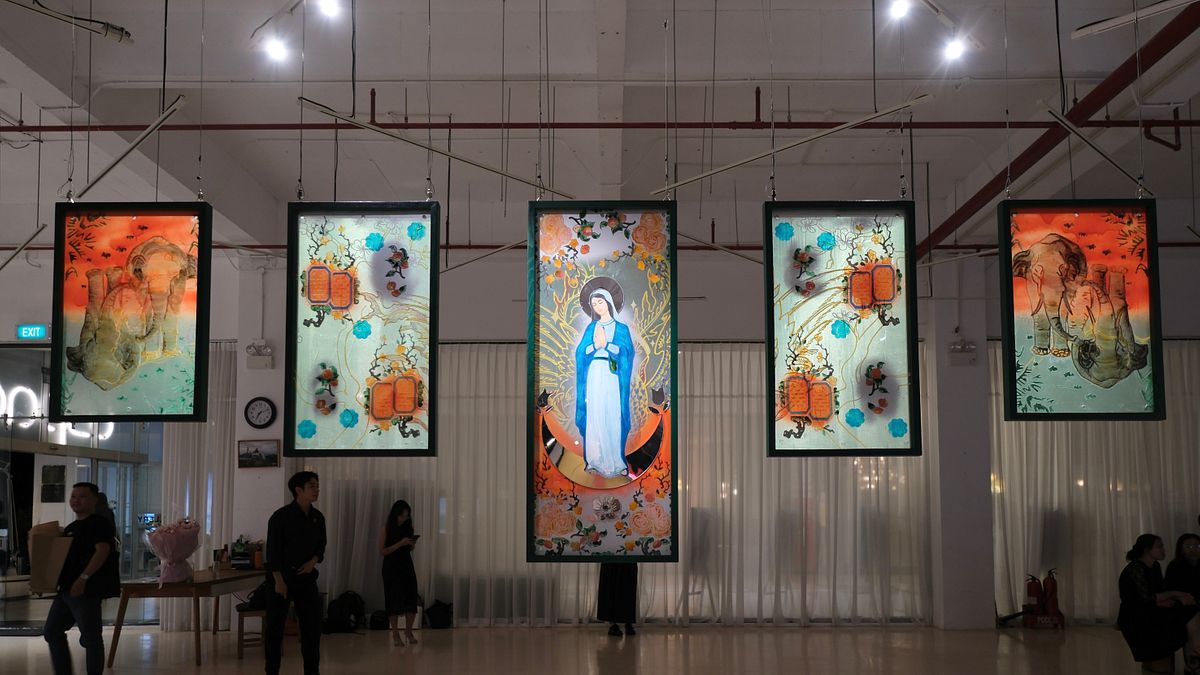
“The Lady of Faith” (front), 2025. 40 x 100, 40 x 70 cm, 40 x 60 cm (set of 5 panels). Plexiglass, fabric, glass paint and acrylic. Installation view at Lotus Gallery.
To Tín, each artwork represents a human being, which explains the complexity of materials used in his works. In the “Heart” (Tâm) series (2025), each material represents each part of a human: craft paper and canvas stand for the bones, clear orange acrylic board embodies muscles, mosquito net fabric resembles human skin, die-cut mirror acrylic represents the soul. This series of orange-hued paintings shows human beings in different stages of emotions against the backdrop of Vietnamese folklore. In each painting, there’s always one human being depicted with a mirror-like material above the mosquito net fabric, prompting viewers to see their own distorted reflection. In this way, the audience does more than observe the artwork; they encounter a version of themselves, confronting the inescapable complexity of their own humanity.
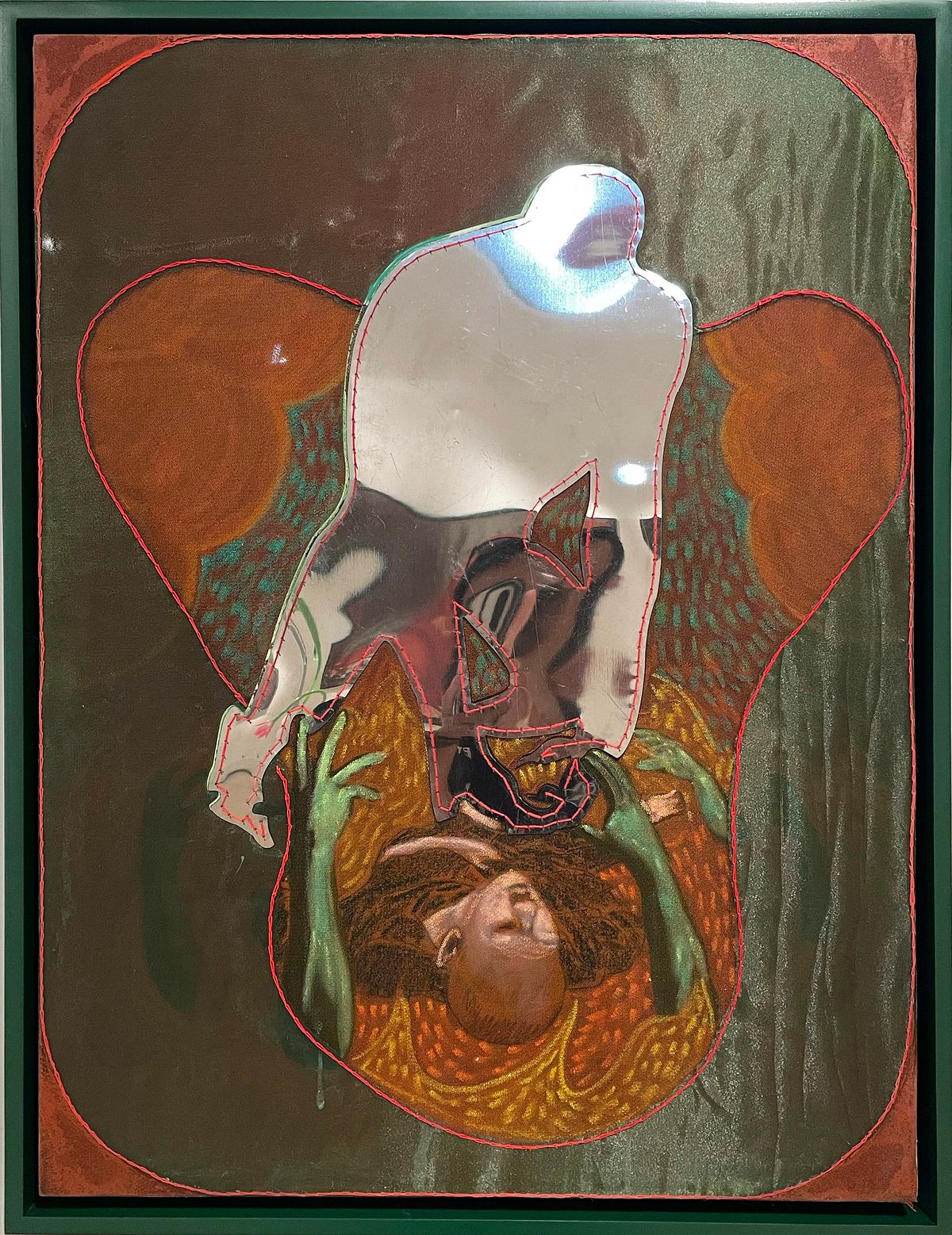
Heart 5 (Tâm 5), 2025. 80 x 60 cm. Dó paper, plexiglass, fabric, stainless steel, oil pastel and color pencil.
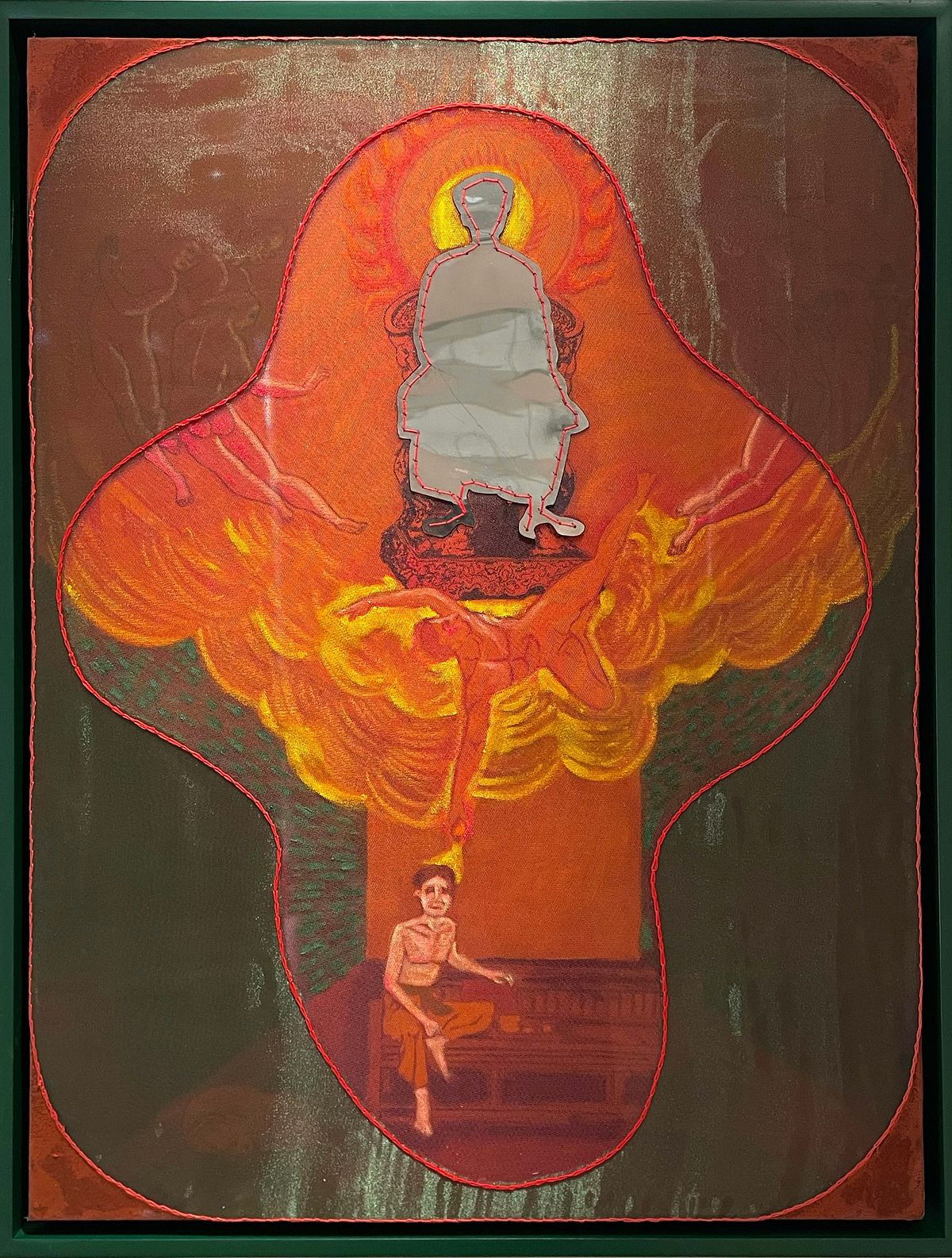
Heart 2 (Tâm 2), 2025. 80 x 60 cm. Dó paper, plexiglass, fabric, stainless steel, oil pastel and color pencil.
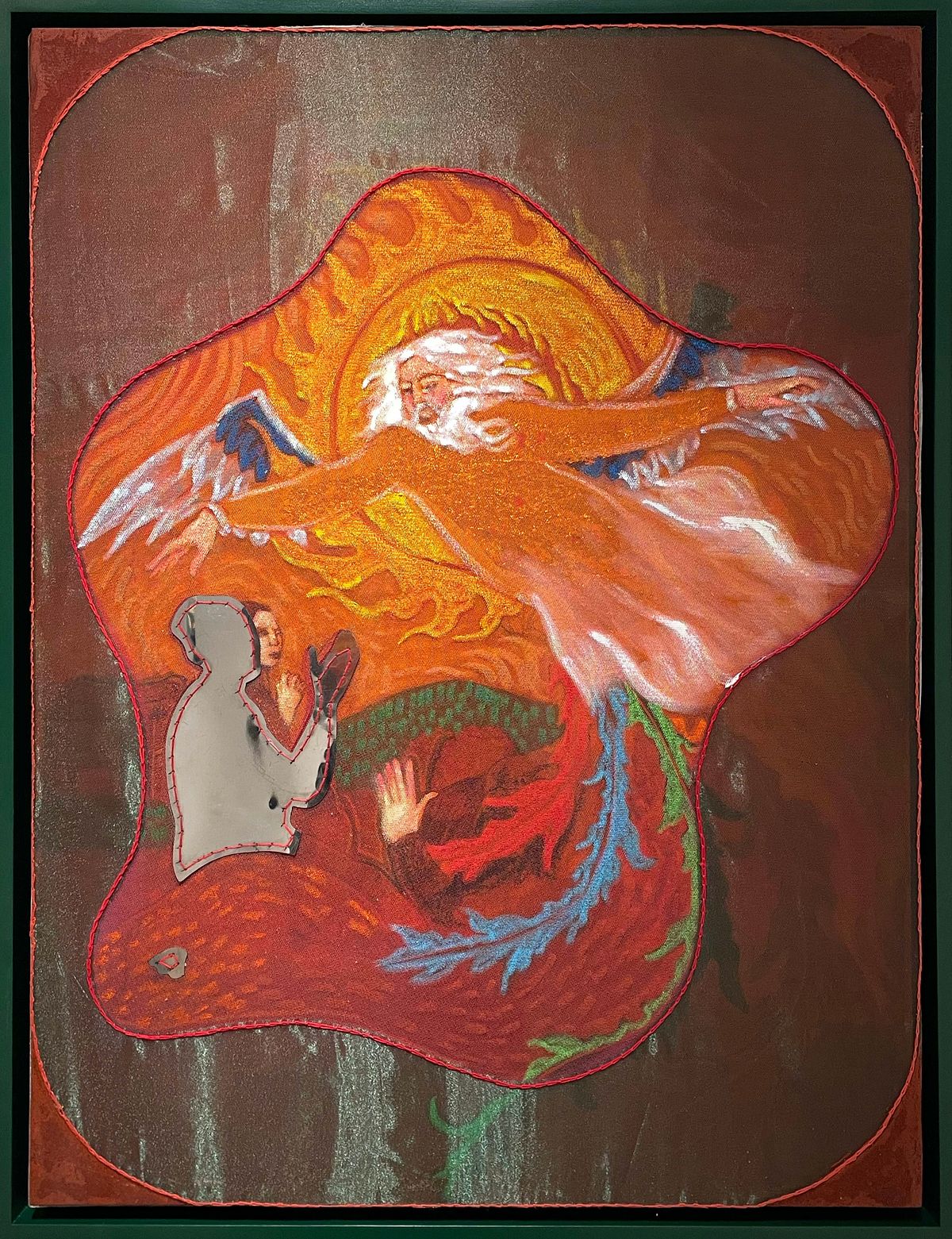
Heart 11 (Tâm 12), 2025. 80 x 60 cm. Dó paper, plexiglass, fabric, stainless steel, oil pastel and color pencil.

Heart 12 (Tâm 12), 2025. 80 x 60 cm. Dó paper, plexiglass, fabric, stainless steel, oil pastel, and color pencil.
Mosquito net is commonly known as a household material, and probably the last material that one can think of when it comes to making a painting, as it gets torn easily and can be stretched more than regular canvas or silk. To work with this material, the artist needed to go through many different trials and errors, and eventually mastered the art of painting on such fragile material. This new experiment and artistic direction began in 2022, when the artist went through financial difficulties, and his mother gave him a bag of fabric, including mosquito nets. He made use of what was available and often added an extra layer of material underneath when painting. Over time, he has learned to adapt and create with whatever he could find, even using photographic gel filters or plastic bags if needed.
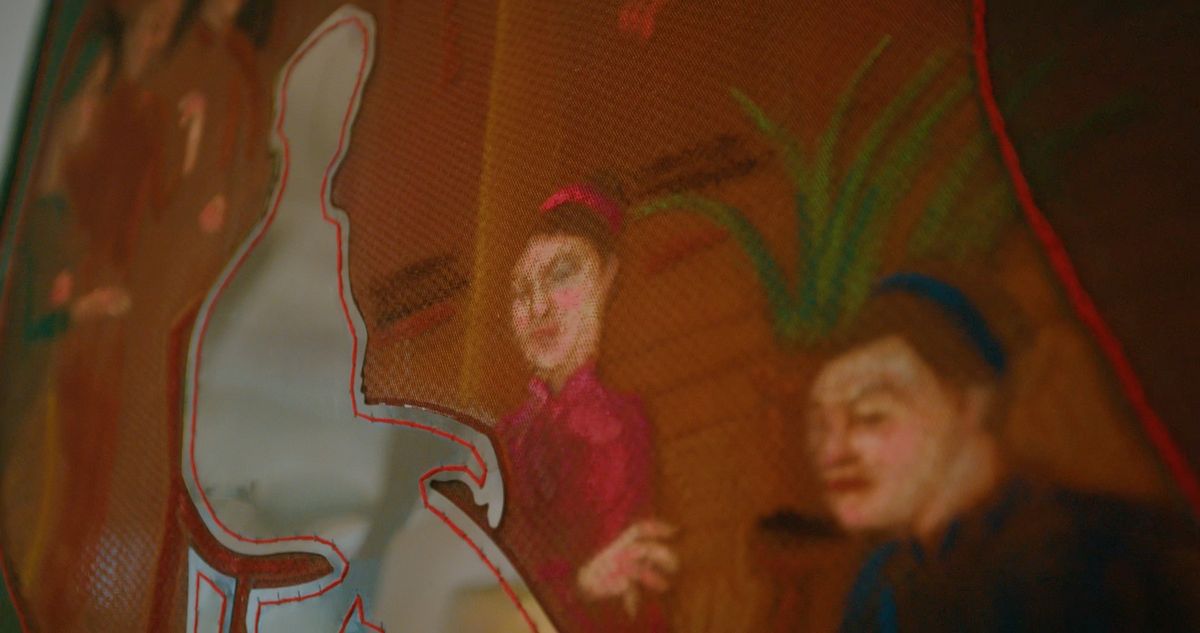
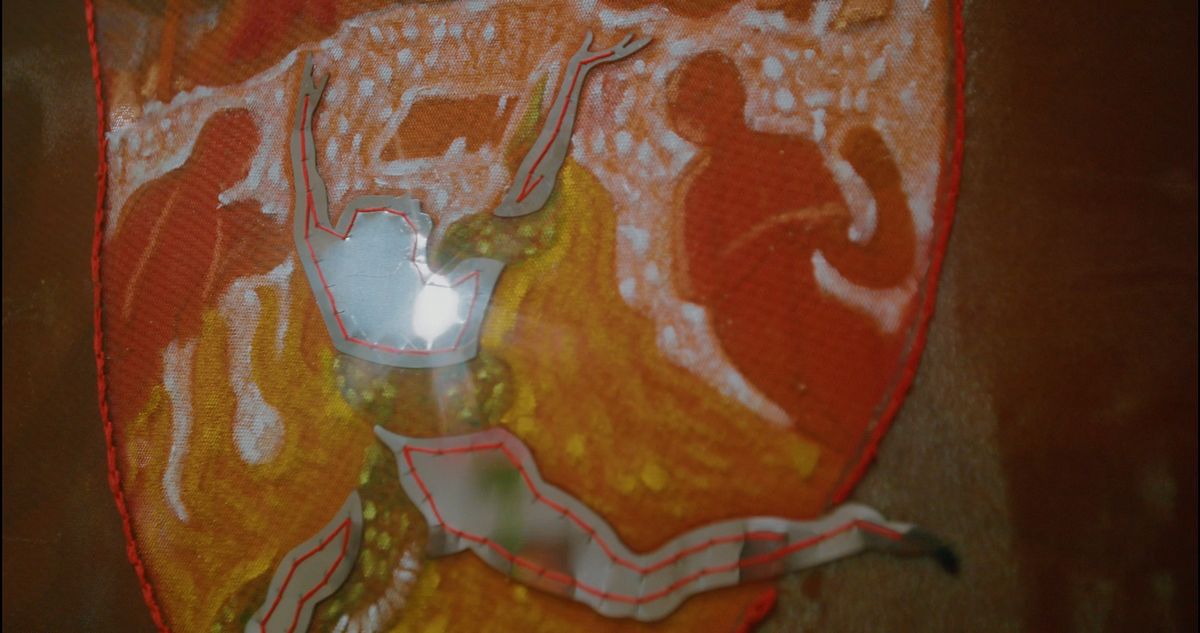
Details of “Heart” (2025).
Regarding his choice of stainless steel instead of real mirrors in his works, Tín shared that mirrors oxidize quickly, and eventually, stainless steel became a material that aligns with the themes and messages in his work. Unlike a perfect mirror, stainless steel is not completely reflective, but only offers a distorted and blurry glimpse, symbolizing how we can never fully understand our inner selves. The moments we look into a mirror are when we’re most self-aware, yet the reflection of our soul is something that not everyone, sometimes not even ourselves, can truly see through.
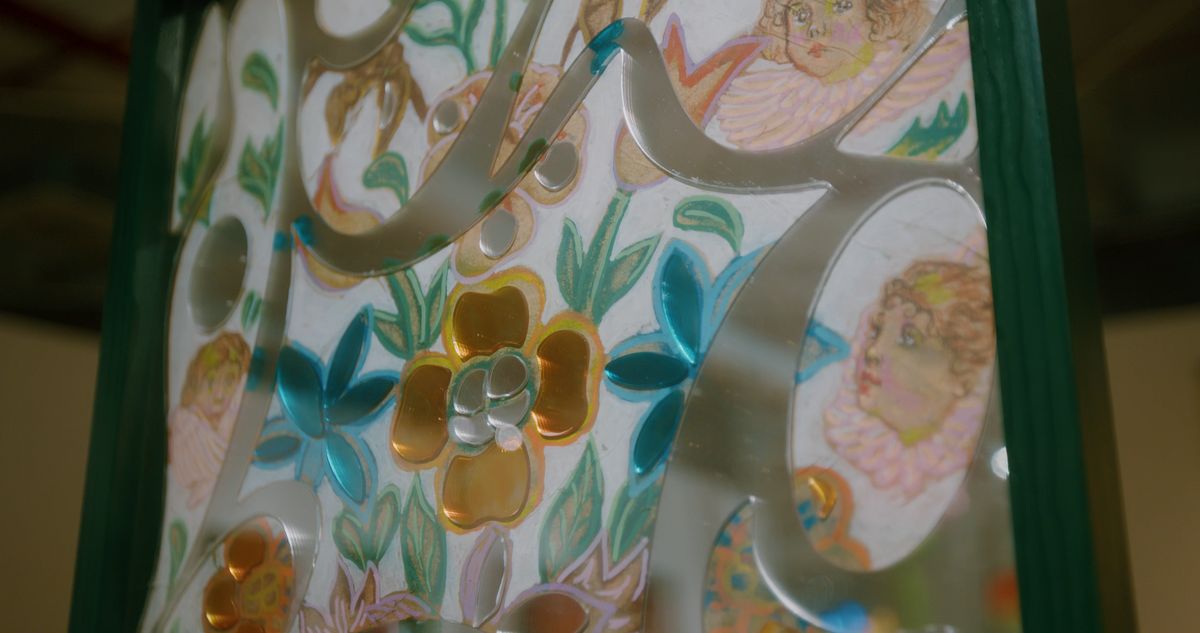
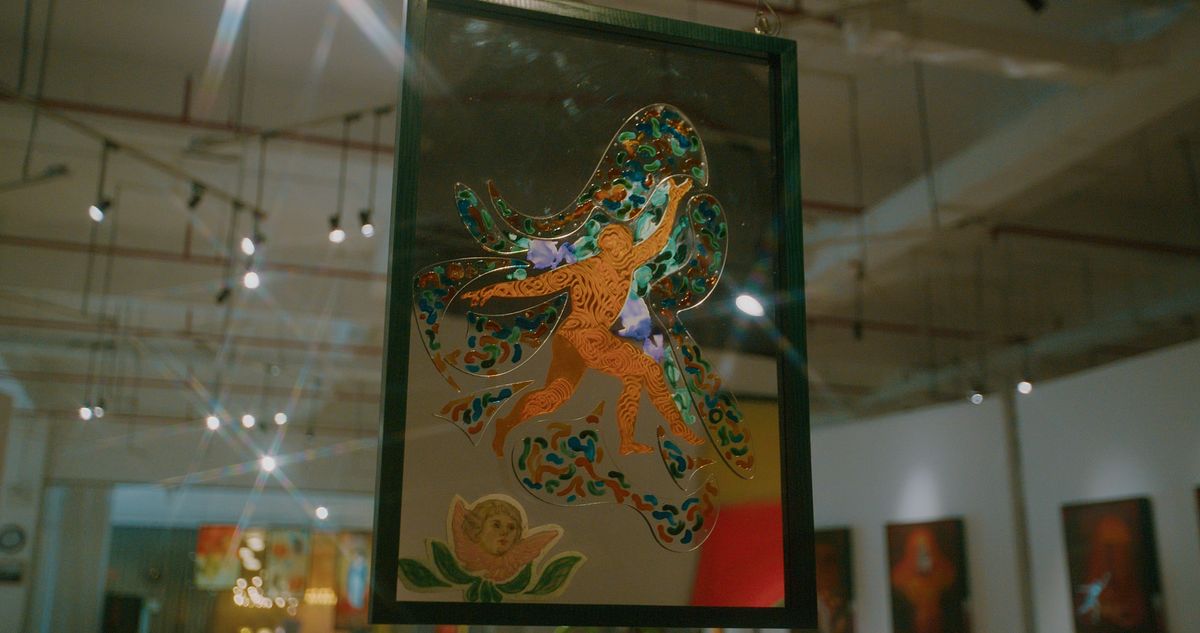
Details of “Serenity 1“ (Thanh tịnh 1), 2025. 60 x 40 cm (set of 2 panels). Glass paint and acrylic on dó paper and plexiglass. Installation view at Lotus Gallery.
“Having faith in oneself is already a form of progress,” Tín told me. When viewers encounter his works, one of the first impressions is often a strong sense of faith — a core element that has naturally been part of his creative process since the beginning, shaped by his upbringing. Yet in his practice, faith does not have to be tied to any particular religion, as it can be about anything that gives a person strength, purpose, and a reason to exist in the present moment.
There were times when he felt uncertain about the future, and maintaining a main job for stable income also meant that the time left for painting was limited, but it was precisely this discipline that allowed him to keep creating. Rather than being paralyzed by doubt or overthinking, he pushed himself to paint consistently and set deadlines to stay on track. This self-discipline is deeply rooted in his faith, providing him with the strength and commitment to continue pursuing his artistic path.
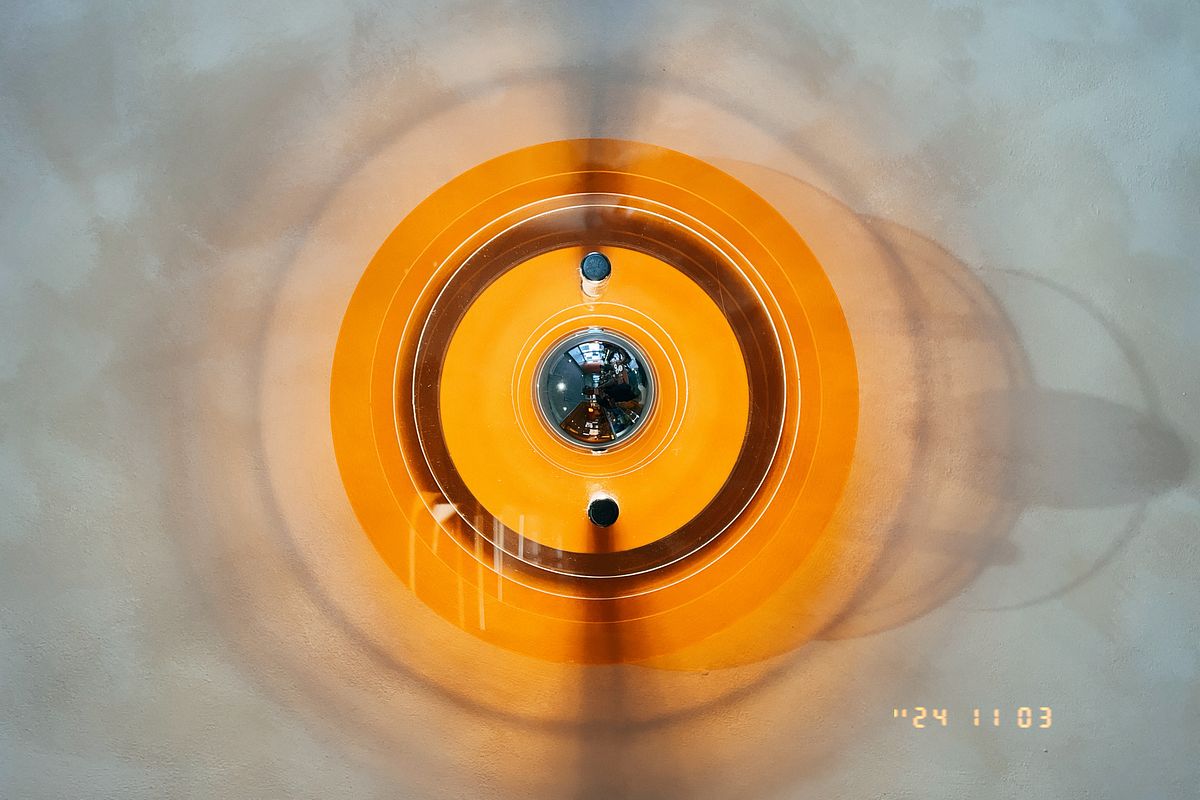
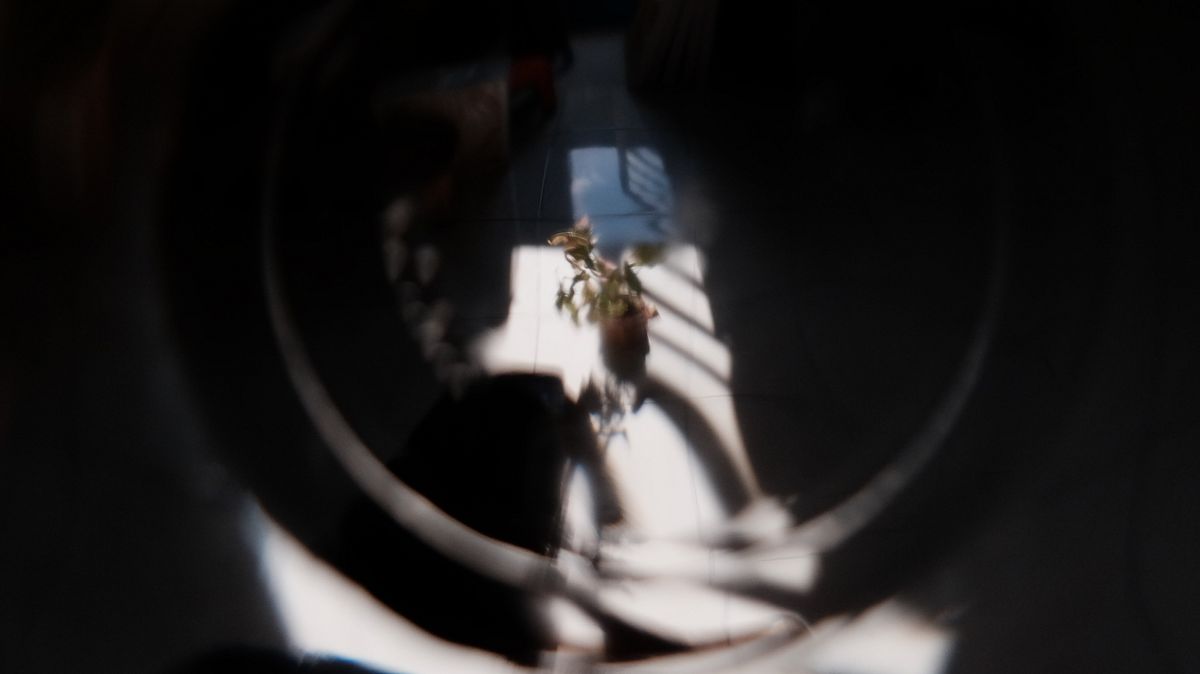
Inspirations from Nguyễn Đức Tín’s studio.
Left: Lights reflected through layers of acrylic board gave inspiration to the “Heart” series.
Right: Shadows and reflections.
In the near future, Tín hopes to explore new facets of Vietnamese everyday life and culture, including subjects like motorbikes, while experimenting with different materials such as lacquer, and researching more on church stained-glass paintings.
Photos courtesy of Nguyễn Đức Tín.

